#I learned about native american moon calendar too
Text
Dribble Drabble
Brain: It's time.
Me: Time for what?
Brain: Time.
Me: Time?
Brain: T I M E
Three hours later.
Me: I just researched about a celtic moon calendar, is this what I needed to do??
Brain: Come back later, I'm happy in the moon thoughts.
#writing memes#why am I looking at moon calendars?#what did learning this do with writing?#Idk#I learned about native american moon calendar too#Very nice to learn#world building (?)
2 notes
·
View notes
Text
April Week 3 - Local Folklore
Hello everyone and welcome to the next week of the 2022 Grimoire Challenge! This week our main topic is local folklore. This isn’t going to be just your immediate area, it’s going to go beyond that. Whether you’re in the states or in a different country, think about your wider area. The outline is going to be based in the states, but apply the same system to your own area! Without further ado, let us begin!
Part 1 - Local Myth and Legends
Think about your town or city first. Are there any myths or legends about magic in your area? What about before it was what it is? What kinds of peoples lived in your area. For example, I live in the Black Swamp area of Ohio. There were many native American tribes that lived in the area. Look into those! What kinds of myths and legends existed before it became what it is today? Remember though, if you’re looking into another culture or practice, to do so respectfully!
What do you gain from these myths and legends? Do any of them line up with your beliefs and practices? How do they differ? Ask yourself questions like this.
I personally believe in a great idea of animism, and genius loci, or the spirit of place. How does the area around you feel? What kinds of plants and animal life are there? Go out to a local park, find a quiet place alone, and sit. Think. Listen. What do you feel? What do you hear? What do you see and smell? What is nature telling you? What is the spirit of this place?
Part 2 - Local Practices, Present and Past
Now that you know a little about the place itself and who lived there, what kinds of things did those people practice? Are they similar to your own practices? Or different? What can you take away, if anything, from their practices? What kinds of deities or spirits did they work with, if any? What kinds of powers did they call to, or control?
Think about this in the present too. Are there any majorly dominant religions in the area? How can you compare your practice to theirs, and what can you learn from those religions? There’s so many things we can learn from any religion around us.
Where do your practices fit into this great map of religious and spiritual practice? Are you a single red dot on the map, all on your own? Or are there others who practice the same or similarly to you? Seek them out!
Part 3 - Urban Legends
This one’s a bit more fun. We all have urban legends where we live, about any of a million different things. Like Mothman or Bigfoot, a local haunt, or local ‘crazy person’ or a house that is haunted.
Look into your local urban legends. How far back did they originate? Where did they come from? Is it a belief that followed a group of peoples who moved into the area? Or did it just spring up out of nowhere.
This topic is a fun one to help you learn more about your local area and their superstitions.
Part 4 - Lab Notebook
With the full moon and Easter having just passed, look back. Did you perform any magic? Do any rituals? Write them out if you haven’t already. What kinds of things do you do for the full moon? How do you ritualize it, if at all?
If you didn’t do anything, make a plan for the next full moon! Write out a small or large ritual, look into what others do for the moon and see if you can incorporate those things into your practice, or create a whole new original practice! Mark your calendar and bookmark this page so you remember to perform it on the next full moon!
Part 5 - Practical, Journal, Meditation
Perform a spell! Either one you’ve found online or in a book, or make up your own!
Afterwards, journal about it. How did you feel before, during and after it? Meditate on the spell, and what you want it to achieve. How is it going to get there? What work do you have to do to help the spell along?
Alright! That’s this week’s prompts! Good luck witches!
-Mod Hazel
#grimoire#grimoire challenge#grimoire challenge 2022#2022 grimoire challenge#witch#witchcraft#witch challenge#witchcraft challenge#april week 3#grimoire information#grimoire stuff#grimoire prompt#magic#magick#witchy#witches of tumblr
62 notes
·
View notes
Text
13 Weird Things That Happened During The Full Moon And WHY They Happened
You’d think as someone that spends most of their free time writing about the paranormal that I’d have witnessed certain things in my life.
Perhaps I’d grown up in a haunted house?
Maybe I’ve seen a ghostly figure traipse around a house during a tour of the property I would soon call home?
And what about that imaginary friend that liked to tell me about that time daddy got angry and buried mummy in the cellar?
Whilst at least 2 of those 3 things are true, the reality is I haven’t had that many encounters with those from beyond the grave.
But there’s always one thing that made me know there was more to the world than the things we can see. There was always one thing that reassured me that there was magic and mystery we have yet to explore.
And that was the moon.

It was only last week that I was reminded of my affinity for the full moon, when everything just felt…
Odd.
Everything felt close and isolating and honestly I can’t find the words to describe it. And a blogger, that’s a problem.
My Wiccan best friend - just like a gay best friend, only I’m not Carrie Bradshaw and my life isn’t dedicated to finding a husband - said the same thing, noting that this cycle’s full moon was extremely intense for her, too.
She said she often experiences insomnia when the moon is fully illuminated, whereas I’m probably on the ‘lunacy’ side of the spectrum.
I’d simply never felt a lunar cycle so strongly.
So, I thought I’d do a little digging - and it turns out I’m not the only one that has such an adverse reaction to the full moon. Turns out that the whole world has never really known how to cope with the middle of the lunar cycle, and still struggles to act normal on the one day of the month.
I guess you could say things are about to get…
Paranormal.

Today we are gonna get talkin’ ‘bout what the moon really means - historically, scientifically, and spiritually. And then we’re gonna get to the stuff you clicked on this post for.
All the creepy shizz that has gone down when the moon is full.
The Science Behind The Full Moon
*Pushes glasses up nose*
*Realises I’m wearing contact and feels like prat*
The full moon is a lunar phase when the moon is fully illuminated from the perspective of the Earth. This occurs when the Earth is between the sun and the moon.
There has been no evidence to suggest it has any effect on human behaviour. Only there has been. And there’s a lot of it. The thing is, none of the studies brought together show any distinct pattern.
Sometimes the full moon affects things negatively, like more violent criminal acts taking place; sometimes the full moon affects things positively, like baby booms. Either way, something rather fishy is going on…
And fishy is the right word.

Our obsession with the moon can be traced back to how we have used it to chart our lives.
Studies on sea organisms have proven how this is still utilised by animals who don’t have the benefit of asking Siri to set a reminder to put the bins out; creatures have used it to anticipate changes in the environment, such as certain organisms being more active during the new moon when its darker to avoid being seen by predators.
Historically, humans have also followed the lunar cycles as a calendar, and certain societies still do:
Native Americans still denote the full moons different names depending on the month and season, a concept that still lingers even outside of the Americas.
Take the ‘harvest moon’, or the ‘hunter’s moon’ - these are the full moons that coincide with different seasons.
Most pre-modern calendars were also based on the lunar cycle, explaining why our months (not the similarity to the word ‘moon’) mirror length of the lunar cycle (29.5 days).
The thing is, our current reliance on physical calendars doesn’t mean we’ve ditched our dependence on the moon. But it seems our relationship with the moon has shifted from a reliance to somewhat of a curse.
And this curse comes back, month after month, like clockwork.
This curse is called Lunar Theory.
What Is Lunar Theory?
This theory claims there’s a link between the lunar cycle and human behaviour. Mood changes, an increase in fertility, a spike in social tension - the moon has been and will continue to be blamed for a variety of problems.
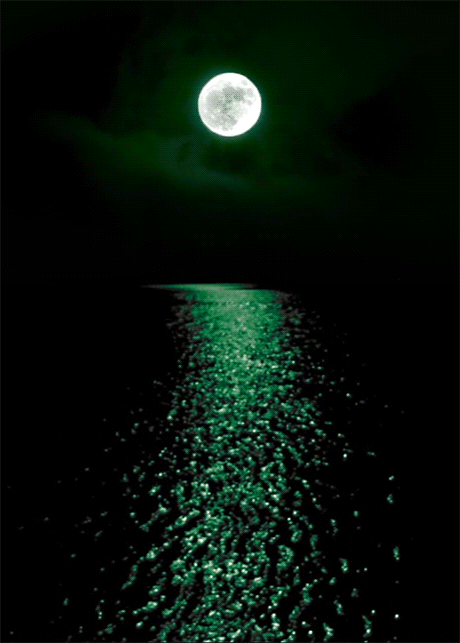
And this started, well, at the beginning of time.
Since ancient times the moon has been associated with odd behaviour, from insomnia to insanity. For some reason, epilepsy is also frequently associated with it, alongside more general ‘madness’.
Ever considered where the term ‘lunacy’ came from? It is derived from the Goddess Luna, the deity of the moon, who would supposedly spend her evenings riding a silver chariot across the sky.
Even in the the 18th century, English psychiatric hospitals made a point of restraining and shackling their patients during the full moon. But if you weren’t in the hospital, you’d probably be citing the full moon as a defence for their criminal actions.
But expressing ‘odd’ behaviour wasn’t the most common link between humans and the moon: it was mainly used to judge women’s fertility.
Aside from the lunar cycle sharing the same length as a women’s menstrual cycle, many ancient texts claimed it could be used to determine pregnancy.
A Czeh doctor in the 1950s discovered one such text from the Assyrian era, a text which claims a woman’s fertility can be pinpointed by the phase of the moon. If you were born under the full moon, for example, your peak-baby-making-potential would be at the full moon.
A study of a baby boom at Kyoto which coincided with a Supermoon supported this claim, as did the fact that half of the scientific reports regarding the moon are about female fertility and pregnancy.

Outside of the womb, society is also afflicted by the lunar cycle.
A study of Floridian society across 5 years saw an increase in both aggravated assault and homicide during the full moon. Such claims have had a permanent impact on a variety of judicial systems, particularly the police.
Even the stock markets are affected, with averages peaking higher nearer the new moon than the full moon!
Another peculiar impact is that of motorbike accidents, with a sharp spike of 5.3% during the full moon. Then again, the full moon could be a worthy distraction, especially if you’re coming round a corner and see a glowing orb not dissimilar to a headlight.
And so, the demise of innocent bikers is our segue into a similarly deathy-topic.
The Spiritual Meaning Of The Moon
The full moon has clearly amassed many spooky attributes in its time, but it's the lunar cycle as a whole which has earned a deep, spiritual meaning.
Given the link between the moon and menstruation, the moon is symbolically considered female, guiding our emotions and representing the subconscious.
Think of the natural cycles of life, or the tides of our oceans; what is on the surface doesn’t reveal the vast depths below. Beyond our inner selves, the moon also represents learning, among a variety of other concepts this article doesn’t have room for.
However, this post does leave room for the dichotomy between the moon and the sun. The sun represents our outer selves and our strength, and the rom-com-esque mythological story between the moon and sun continues to confirm this relationship.
For the spiritual among us, there are actually many ways to connect with the entire lunar cycle and use it to your full advantage.

The lunar cycle supposedly represents a cycle of life, or, in more simple terms, the cycle of an idea or a project.
It starts with the new moon:
It's a fresh start, a time to be alone and recharge, a time to turn inwards to yourself as the moon does itself (it presents its dark side to us, turning away from the Earth). It is advised that you write your intentions for the next 29.5 days to make the most of your lunar cycle.
Through the waxing period of the moon (leading up to the full moon), projects develop, encountering obstacles and editing your ideas. Allow your dreams and curiosity to fuel you during this time, guiding you to fulfilling your desires.
At the full moon, clarity is reached. But with opposing zodiac signs present, tensions and emotions spike. Revel in the light the full moon is famous for, whether your bathing in the light of the full moon or recharging your crystals.
The waning period (leading to the new moon) is all about letting go and reaching emptiness, completing the cycle. Sure, it might sound like a rather sad way to end the cycle, but it should actually be used to honour your achievements, as well as recognising the bad habits that might be holding you back.
On another level - or on another spiritual plain, that is - the paranormal also come out to play when the moon is brightest.
According to Mark Keyes, the head of the Pennsylvania Paranormal Association (a former police detective who noticed the spikes in criminal activity during the full moon) claims that both the moon and the changing of the seasons points to an increase in paranormal activity.
From the end of September through to the mid-winter, we are the most sensitive to the supernatural as the veil between the worlds thin.

Whether its mediums being able to chat to ghosts more easily, or non-mediums being more susceptible to spirits, we are able to see activity on a much greater level.
And I mean that in a literal sense.
The full moon provides a greater level of light to us, allowing us to see spooky goings-on. Yet beyond what we can see, there are two other explanations for this growing connection between us and that which is 6 feet deep:
If there’s an increase in human activity during the full moon, surely this could take its toll on the spirit world, too?
Many religions cite the spirit world as under the sea, such as the Celtic Otherworld. As the moon affects tides, surely the gravitational pull would impact those beyond the grave as well?
13 Weird Things That Have Happened During Full Moons
Urban legends, horror movies, ghost stories that your grandmother used to tell you before making some off-hand racist comment about the newsreader on the telly…
They all have one thing in common: they all start with a full moon.
And as it turns out, real stories of strange and historic occurrences share this, too.
#1 - The Birth Of Jesus Christ
Remember this minor detail in history, you know, the one that kickstarted a new religion and changed the face of human history forever?
Yeah, that’s the one, the birth of the son of God.
In an attempt to date the birth of Christ, historians have used one detail mentioned surrounding the death of King Herod which occurred after the birth of the King of the Jews:
Records claim Herod died shortly after a lunar eclipse.
We know it happened before Passover, which means around March, so this could either be March 13th 4BC, or January 10th 1BC. The latter lunar eclipse was much more significant and thus more likely to be recorded, suggesting Jesus was likely born around 2 BC.
#2 - Columbus Being A Colonial Dick
Colonialism fucking sucks.
And given there’s been so much of it throughout history, it’s no surprise that one of these terrible occurrences went down on a full moon. The thing is, Christopher Columbus himself - the champion of sailing to other places and planting a flag there - used a lunar eclipse as a part of his plans to plant a flag on Jamaica’s shores.
During an expedition, he and his crew found themselves marooned on unknown territory with dwindling reserves of both food and morale.
To convince the Jamaicans to cooperate with his expedition, he threatened to take away their moon, fully aware that a lunar eclipse was set to strike.
Low and behold, a ruddy, angry looking blood moon graced their skies.
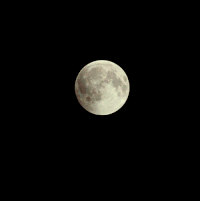
In fear, they asked him to bring it back. He prayed, and the normal moon returned, convincing them that he had otherworldly powers and should thus follow his orders.
Told you he was a dick.
#3 - Benjamin Franklin Gave Us A Geography Lesson
Considering the current president, I never expected to have anything in common with a leader of the free world.
(Apart from the rampant sexism, you stupid b*tch.)
But it turns out that Ben Franklin was just as intrigued by the moon as I am! During a stint in his home city of Philadelphia, he was keen to see a total eclipse. Unfortunately, bad weather dashed his hopes of witnessing the phenomena.
The thing is, a letter from his brother later received claimed the weather would clear by the time the eclipse occurred.
This prompted him to investigate weather patterns along the coast and even lead him to write a treatise on the matter.
Writing about geography? Clearly this is evidence of lunacy.
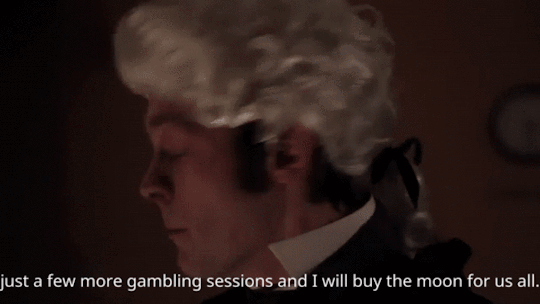
#4 - Lawrence Of Arabia Earned His Nickname (1917)
The lunar cycle is namedropped in many prophecies, often being used as an omen or a sign of certain events to follow.
Indeed, this was what lent a helping hand to the English military icon affectionately known as Lawrence of Arabia.
With a lunar eclipse on the cards, they could easily overrun a Turkish fort full of soldiers who were banging pots and shooting at the moon as they believed an Islamic prophecy heralding the day of judgement was coming true.
#5 - The Athenians F*Ck Up In The Battle Of Syracuse
Okay, so it might not be a technical term Lawrence of Arabia would’ve used to discuss such tactics, but when a lunar eclipse occurred (on the 28th August 413 BC), Nicias, the bloke running the Athenian army asked the priests what to do.
(Imagine an Ancient Greek accent.)
“Surely this is an omen, right?”
The priests told them to wait for 27 days in the harbour. Unfortunately, this gave the enemy a 27 day window to attack. And they did.
The Athenians were quickly defeated.
#6 - The Fall Of Constantinople
Whilst this historic moment didn’t happen within the shift of a full moon, a lunar eclipse certainly helped move the whole shebang along.
With 7 days to go until the final moment from which the city fell to the Ottomans, a lunar eclipse fulfilled a prophecy confirming the city’s seizure.
Omen? Trivago.

#7 - A Trans-Antarctic Expedition Is Saved By The Full Moon
It’s 1916.
We are in the Antarctic with the Ross Sea Party, and we are stranded.
There’s a blizzard blowing around us, and there’s thin ice below. Either we fall through the ice in a mad attempt to escape to Cape Evans, or we starve to death. Or we freeze. Can’t forget that one.
Our only hope is to wait for the full moon, when our sole source of light in the evenings can guide us to safety.
Luckily enough, on July 16th, a full moon strikes, bringing with it clear skies, calm weather, and thicker ice. Huzzah!
Wait, is it just me or is it getting darker?
Yep, a partial lunar eclipse was forecasted for this expedition, but a slither of light was enough to see them through the safety.
#9 - British Surgeons Refuse To Operate
The eternal link between blood and the lunar cycle flows into the medical field this time, but you can’t plug this one up with a tampon.
Medical myths claim that throughout history surgeons have been opposed to performing surgery on patients during full moons, citing issues with blood clotting and thus an increased risk of patients bleeding to death.
Heck, this was brought up by a British politician in 2009!
He was, of course, mocked for his claims.
#10 - Schizophrenic Patients Exhibited An Increase In Violent Behaviour
Many claims regarding the full moon clearly focus on, ahem, ‘lunacy’. Whilst the term is far from politically correct, links have been forged between mental disorders and the moon.
Understandably, mental health professionals refute these claims, but with studies pointing to an increase in violent activity by 1.8%, surely this is grounds for concern?
No, no it's not.
Mathematically speaking, anything below 2% is unverifiable as a significant change worthy of study.
#11 - A Police Emergency Occurs In Brighton
In 2007, Brighton’s police force released more officers over the summer months as a result of the increase in criminal and paranormal activity during full moons.

The thing is, they aren’t the only boys in blue to make this decision.
Sussex police force supported their actions, claiming that during the full moon criminals are more aggressive.
Even across the pond in Ohio and Kentucky similar actions have been taken to protect and serve during the lunar cycle. In another corner of the world - New Zealand - the justice minister supported such beliefs, confirming hocus-pocus isn’t just for the person sitting behind the keyboard and typing this.
#12 - A Supermoon Causes 2 Earthquakes And Tsunamis
Both Japan and countries around the Indian Ocean might be acquainted with the threat of earthquakes and tsunamis, but their mysterious occurrence of 2 surrounding a supermoon are enough to raise suspicion.
The Tohoku earthquake and tsunami of 2011 peaked at a magnitude or 9.1 on the Richter scale, confirming itself as the 3rd biggest earthquake ever recorded.
The earthquake in the Indian Ocean in 2004 - also known as the Boxing Day Tsunami - is one of the worst natural disasters in history, claiming 200,000 lives.
Both were framed by a 2 week period around the full moon, wreaking havoc - and raising eyebrows.
#13 - A 7.8 Magnitude Earthquake Occurs During A Supermoon
In November 2016, New Zealand was hit by a huge earthquake which occurred on the night of a supermoon.
And if that wasn’t enough, it struck just after midnight.
To this day it is considered to be “one of the most complex earthquakes ever studied” as ruptures occurred on multiple faults.
Yeah, that shizz is spooky.

Does The Moon Affect You?
Is this all just goblin n’ troll talk, or is it real?
And who else is loony for the moon?
If you loved this post, I’m sure you’ll fall head over heels for my other posts, too! And while you’re at it, be sure to follow me for a new real ghost story everyday.
#full moon#lunar cycle#the moon#aesthetic#werewolves#happen during a full moon#happen during full moons#next full moon#full moon 2020#blue moon#harvest moon#moon tonight#wolf moon#supermoon#full moon march 2020#lunar theory#moon theory#full moon affects mood#does full moon affect your mood#full moon meaning#wolf moon meaning#moon meaning#paranormal#paranormal activity#historic events#strange events#unsolved mysteries#long post#long read#lunacy
36 notes
·
View notes
Text
The Faery dozen: 12 herbs for Faery gardens, offerings, and magick

by Michelle Gruben
In the hidden land of Faery, travelers say, there are marvelous herbs and flowers completely unknown in the human world. Brilliant colors, intoxicating scents, and magickal plants that bring joy, visions, or sleep. And yet, over the years, fairies seem to have taken a liking to some of the more common plants right here on Earth.
This list of twelve fairy favorites is drawn mainly from folklore and literature about fairies (as well as a touch of personal experience). Since fairies live close to nature, many plants and herbs are associated with the Fae—but these ones are particularly liked by the Fair Folk. Some are traditional Faery offerings, planted or bestowed in order to win their favor. Some are considered portal herbs that can aid you in making connections with the Fae. Others are used in spells and formulas for magick of the Faery kind—especially love magick, glamours, and psychic insight.
Let your intuition guide you on how to best use these Faery herbs (observing all safety precautions, of course). To cultivate an appreciation for these storied plants is—in no small way—to step into the Faery lands. I’ve eschewed some of the more exotic plants in favor of ones that can be found without exceptional effort or expense.
Language notes: “Plant” and “herb” are used interchangeably here. Plant names are capitalized out of respect. I usually write “Faery” for the race/kingdom generally and “fairy” for individuals, but not always. (Don’t dwell on it…faeries can't stand a stickler.)
1. Bluebell

Native to England and France, Bluebells grow in lightly shaded gardens and woodlands. The bell-shaped flowers are an otherworldly blue—the rarest color in nature. The Bluebell was once named after Endymion, the sleeping lover of the moon goddess Selene. The bulbs are poisonous and can pose a danger to humans or animals who mistake them for Spring onions.
Storybook images abound of fairies playing among Bluebells. They are said to dance to the sound of the chiming flower cups. To hear a Bluebell ring is to know that fairies are near. In other (gloomier) customs, the sound presages death.
In Irish tales, it is bad luck to walk through a patch of Bluebells. To do so is to disturb the revels of the Fae and invite their displeasure. Like many fairy flowers, Bluebell is an unlucky blossom to pick or to bring indoors. To cultivate the flower, however, offers no such risks. Bluebells are a charming addition to fairy gardens. (Along with Daisies, Forget-Me-Nots, and other favorites of fairy illustrators.)
2. Vervain
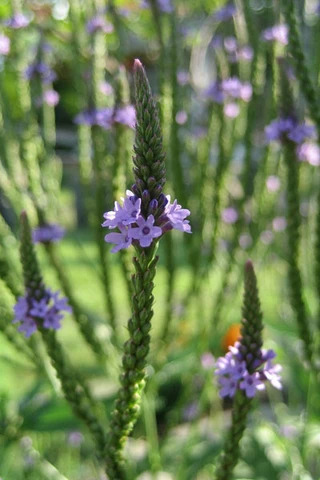
Vervain is one of the most important herbs in the occult traditions of Europe. Its connection to Faery comes through Italian traditional witchcraft. Vervain is sacred to Diana, a patroness of Witches who is also called Queen of the Fairies. In Hereditary Witchcraft, Raven Grimassi writes of a fairy who dwells within the Vervain stalk, and who brings good fortune to the one who invokes her.
Druid tradition also reveres Vervain as an herb of initiation and second sight. Seers burn Vervain incense to open a window to the Otherworlds. You don't have to look very far to find Vervain in magickal literature dating back centuries. (There are several European and American species, each with slightly different energies and uses.)
3. Elderberries
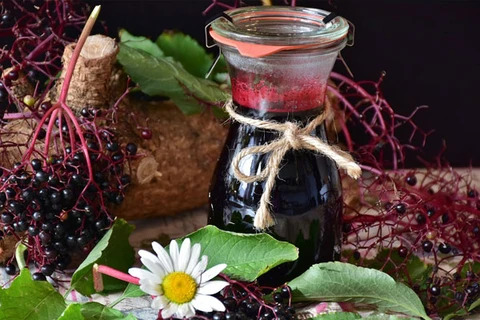
Faeries love all berries! But Elderberries, with their petite size and magickal pedigree, are a fairy favorite. Elder is a Goddess tree long believed to be a gateway to the Underworld. To chop the tree or burn the wood is forbidden. Instead, Elder's gift is her abundant clusters of berries, which are picked and saved for cordials, baked goods, and medicine.
Elderberry wine and Elderberry liqueurs are a fairy delicacy. To pour a dram or two is to be sure that you always have fairy guests.
4. Foxglove
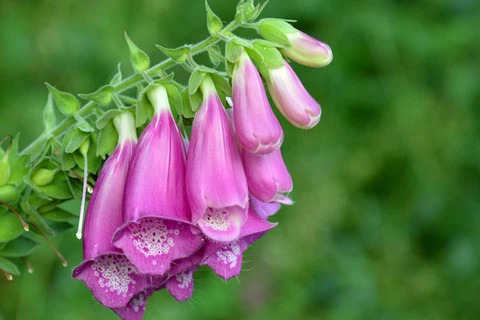
Foxglove boasts hyper-real purple flowers on long, showy stalks. Just look at some of the folkloric names of this flower: Fairy Gloves, Fairy Petticoats, Fairyweed, Fairy Bells… and so on. The common name Foxglove is probably derived from “Folks' Glove,” a British traditional word that refers to—you guessed it—the Wee Folk. The spots on the “floor” of each flower cup are said to be tracks where fairy feet have trodden.
Foxglove is extremely poisonous. Enjoy its unique beauty—but never use it in incenses or potions. Foxglove is another flower which should not be taken indoors, lest you anger the fairies. (Probably wise enough counsel, especially if you have children or pets.) However, a traditional charm calls for a little piece of Foxglove (carried in a locket) to invoke protective Faery light.
Typical of Fae plants, Foxgloves love liminal spaces and semi-shade. You can often find them on the edges of woods or trails, or just below the crests of hills. To dream of Foxgloves can be either an omen of death or invitation to visit the Faery world.
5. Honeysuckle
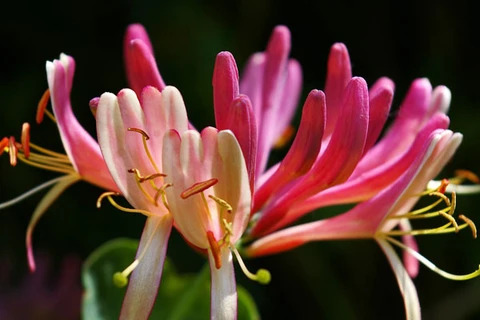
Any flower that attracts bees and butterflies is thought to appeal to fairies, who also delight in sweet smells and cheery colors. Honeysuckle is chief among these garden beauties. Honeysuckle creeps over fences and trellises with gleeful abandon, tempting humans and Fae alike with its nectar. Like many Faery plants, Honeysuckle thrives in part shade. And like many Faery plants, it also has poisonous characteristics (in the leaves and berries).
Honeysuckle flowers and perfume are powerful ingredients in love-drawing magick. (Alas, the fragrance is too faint and fleeting to be captured as an essential oil.) The clinging vines are said to symbolize seduction. The voluptuous flowers evoke the pleasure of a romantic dalliance. When picking Honeysuckle, it is polite to leave the best and last blossoms on the vine for the Fae.
6. Hawthorn

Stubby, gnarled Hawthorn is a tree with ancient links to the Underworld and the Faery realms. It is the “Thorn” in the famous Celtic trinity of trees: Oak, Ash, and Thorn. It is a plant full of contradictions, blending pink-white flowers with forbidding thorns. It is a symbol of both fertility and death. Naturally, it is traditionally planted on borders, as a hedge tree.
Hawthorn blooms in May and so is associated with the holiday of Beltane (one of two Pagan festivals when the veil between the worlds is thinnest). To meditate under a Hawthorn tree is said to strengthen one’s connection with the Faery realm. (But don’t fall asleep, unless you fancy getting lost for good.) To wander into a ring of Hawthorn trees is to all but ensure a glimpse of the Fae.
There are many superstitions and precautions regarding Hawthorn. The wood is not to be cut or burned (except at Beltane, when doing so is customary). In Ireland, farmers would go to great lengths to avoid damaging the tree while mowing or plowing. Housewives would never dare to hang laundry from a Hawthorn tree, lest they accidentally cover up the fairies’ own wet clothing.
Hawthorn is used in spells for devoted love, wisdom, and purification. Tradition prohibits bringing boughs of Hawthorn indoors. To be on the safe side, harvest only the berries—or Hawthorn dew, which the fairies use to preserve their youthful beauty.
7. Thyme
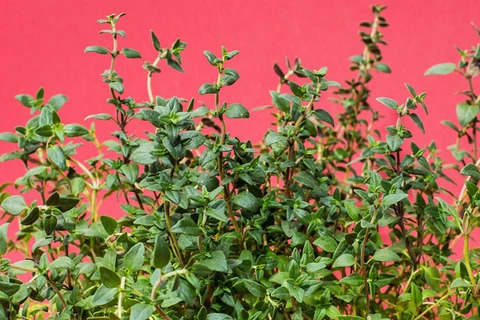
With its miniature leaves and ground-covering habits, Thyme is a common garden herb much-loved by fairies. What’s the appeal? Is it the mouth-watering fragrance? The tiny purple, lavender, or pink flowers? Who knows! But this humble potherb shows up over and over again in the lore of Faery.
Carrying a bundle of Thyme sprigs is said to allow a person to see fairies (or alternately, protect them from fairy mischief.) Sprinkling Thyme near doors or windowsills invites fairies to cross the threshold. Thyme oil may be used to anoint charms and talismans for clairvoyance.
8. Apple

Many people are surprised to learn that the snack shared by Adam and Eve probably wasn’t an apple at all. (The Bible doesn’t specify the fruit, and medieval artists just improvised.)
No, the apple’s reputation for sin and forbidden knowledge may come from another place entirely—the realm of Faery. Like many other Fae plants, the Apple tree is linked to both sexual power and death.
The Apple is a favorite witch tree. The wood is prized for wands, and the fruit for magick spells. Apple trees bloom in spring (at Beltane) and bear ripe fruit in autumn (at Samhain), effectively marking the two poles of the Pagan calendar. When cut crosswise, the fruit reveals a hidden pentagram, a symbol of witchcraft. Ripe apples can spontaneously ferment to make cider, one of the world's first intoxicants.
Apples are found at Faery banquets and human celebrations alike. Eating an apple, especially at Samhain, is said to grant clairvoyant powers. Apples have been known to stay good for months if properly stored—a trait that echoes the near-eternal youth of the Fae. Apples are an ingredient in numerous love spells and recipes for Faery offerings. Fairies prefer smaller, heritage varieties over produce-aisle monster apples.
9. Fig

Ask any fairy and she will tell you: There is no food more irresistible than a perfectly ripened fig. Fig season is fleeting, lasting just a few weeks. While modern agriculture has tamed many fruits and flowers to accommodate human whims, nobody has yet produced a good-tasting fig in wintertime.
Fig trees appear in fairy stories in different parts of Asia, Europe, and South America. The Fig fairy is almost universally described as seductive, generous, and clever. Indian folklore tells of celestial dancers (Apsara) who live in Fig trees. They are usually benevolent, but sometimes seduce scholars and scientists in order to sexually exhaust them and frustrate their research.
The ancient species of Figs are primarily pollinated by wasps who die after entering the flower—a botanical fact that hints darkly at Faery’s seductive danger.
10. Primrose
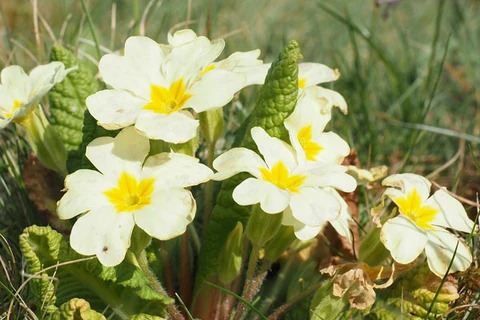
The Primrose is a flower of true wild beauty. After spring rains, Primrose blankets fields with its pretty, delicate blossoms. In Celtic lore, large patches of Primrose are said to be a gateway into Faery. (In Christian Ireland, they hide the keys to Heaven.) Planting the flower outside your home invites in Faery luck—but be careful not to offend the fairies by letting them die.
The demure sweetness of the Primrose especially appealed to early 20th-century poets and artists. (However, the name comes not from “prim” meaning “proper”, but from its Latin name, “first rose.”) Flower fairy illustrator Cecily Mary Barker wrote this rhyme about the Primrose Fairy:
She’s dear to folk throughout the land;
In her is nothing mean:
She freely spreads on every hand
Her petals pale and clean.
And though she’s neither proud nor grand,
She is the Country Queen.
Primroses bloom at Beltane and symbolize eternal youth and innocence. It is said that a person who visited the mythical land of Tír na nÓg would return with a bouquet of Primroses. The English idiom “primrose path” refers to the experience of being pleasantly misled (as fairies are inclined to do).
The Cowslip—famously mentioned in A Midsummer Night’s Dream—is another relative of the Primrose. The North American Evening Primrose is botanically unrelated but has a similar Fae appeal. It grows in clustered patches, blooms for one evening only, and tends to resist cultivation.
11. Orchid
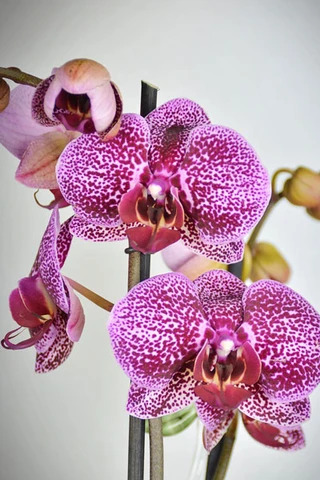
Some people consider Orchids to be the most beautiful flowers in the world. Whatever you think of them, it’s hard to deny that they are among the strangest. There is something extra-terrestrial about them—maybe even Unseelie.
Orchids are hermaphroditic and usually sterile—like fairies, Orchids think human gender and reproduction are kind of hilarious. They are the shapeshifters of the plant kingdom and can look like other plants and animals. But they are still plants, at least. (Unlike mushrooms, another fairy favorite which defies categorization).
The diva of the flower kingdom, Orchids do well indoors and enjoy such human-provided luxuries as fertilizer, humidifiers, and trusses. Are they helpless, or just smarter than us? The well-known phenomenon of Orchid obsession (orchidomania) may be one of the most devious pranks ever perpetrated by the Fae.
12. Rowan
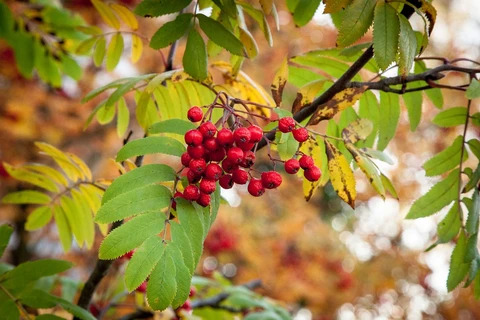
Rowan is one of the most-mentioned trees in Faery lore and magick. Celtic tradition tells us that Rowan was originally from the land of Faery, and was brought to Earth by the Tuatha de Danann. It is a tree of great strength and mystery. In North America, the tree is more commonly known as Mountain Ash.
Rowan trees grow wild in the Scottish Highlands and are known by their bright red berries. (Scottish tradition bans the use of the wood except under special circumstances.) They are commonly found near ancient settlements and stone circles—probably from having been planted for religious reasons. Individual trees may live over 200 years, playing host to innumerable fairy gatherings in that time.
Rowan is dubbed the Witch Tree, and appears in many spells for psychic power and protection. Skim through enough of these, and you may notice an apparent contradiction: Rowan is said to be both attractive to Fae and to offer protection from Fae. Rowan was planted in churchyards to discourage evil spirits. A cross of Rowan hung above a cradle once protected its occupant. And a string of Rowan berries could be worn to deflect sorcery.
Rowan is undeniably a Faery tree—she exists as a wise protector and gatekeeper. Compared, perhaps, to the playful fairies of fruits and flowers, Rowan is a stronger, older being who can keep the delicate peace between humans and Fae.
Hope you've enjoyed this whirlwind tour of Faery plants. There are many others—in fact, some people believe that every plant has a Faery spirit that presides over it. Enjoy learning about plant magick, and may your explorations take you on marvelous journeys!
https://www.groveandgrotto.com/blogs/articles/the-faery-dozen
1 note
·
View note
Text
So here’s a long and detailed post of my 2017!
In years past, I’ve kept a good things jar which is nice because it helps me keep track of all the good things that happened during the year. Something like that would’ve helped a lot this year because although this year wasn’t awful, it was a challenging year. The year started off really great but then slowed down and got stressful. Towards the end though, it came back up and I’m so excited for 2018. I did keep a good things jar the first couple months of 2017, but I stopped soon after the year started. So if the rest of my post after those months isn’t that detailed, it’s because the rest of the year was a blur.
January started off so strong! I spent New Year’s Eve with my cousin Isaac and family and I actually had a lot of fun! I even got a Native American blessing from my cousin’s wife’s grandfather who is Native American! Bailey and I talked a LOT in January; I have an embarrassing amount of good things papers about phone calls and facetimes with him. Speaking of Bailey, the app that we met on, Beme, died in January which sucked but everyone in the beme community spent the last few days sending each other fun reactions. I started my internship with my (now) previous employer on January 3! Even though I started my new internship, I went back in January for an exit interview with my old job at my university and it was so great to see my old coworkers. They were seriously some of my favorite people to work with. Also! The Catholic Campus Ministry (CCM) planning meetings for Awakening retreat began in January (tbh I forgot I served on team this year!) There were also a lot of birthday parties (James, Jayden, Alice) and even a few anniversaries (my parents and my brother’s godparents).
February started off on a sweet note because Bailey was my Valentine and that made me really happy. Speaking of notes, my little brother had an orchestra concert this month as well! My bestie Vivian turned 24 and I had fun at her dinner; I wish I could’ve gone out with them though. I especially hated having a curfew this past year.
March was long and stressful. Work got hectic, school got difficult, and life got hard and depressing. But March ended up being redeeming also; I got asked to be an ash distributor for the CCM campus wide Ash Wednesday mass! I also served on retreat at the end of March and it was beautiful. God’s timing is perfect and that retreat helped me so much; God is good.
April was fun because I went to two concerts! My sister and I saw The 1975 and we were in the pit; I’ve never been so up close for a concert before. I also took my mom to see Chris Tomlin and that concert was so beautiful. It was also fun to do something with my mom! Easter happened right before all of the concerts and Easter is probably my second favorite holiday; I love it so much.
May was a good month; I graduated from college with my master’s degree! All of the graduation festivities were so much fun; there was graduation mass with CCM, the College of Business hooding ceremony, and then the big graduation ceremony. My family and I had a nice graduation dinner after the ceremony with a lot of family. I also got offered a full time position with the accounting firm I interned for. I started working full time after I graduated. I was so grateful for the position because I struggled to find a job when I graduated from undergrad. Job security is nice.
I saw Miike Snow in June! That was a lot of fun! It was also my first time at one of the smaller venues in my city. I racked my brain, and other than that, I can’t remember anything significant that happened in June.
In July, I finally went to the new baseball stadium in town with my family; I say “new” but it’s been open for a couple of years now and I just hadn’t had the opportunity to go. Going to the game made me remember how much I love baseball. We went over the 4th of July weekend so we got to see fireworks too! Speaking of the 4th of July, my family and I went on the military base where my city’s symphony orchestra had a free concert and fireworks show! It was fantastic and the best 4th of July at home I’ve had in a long while. My little brother turned 15 in July! I went to a job interview with Whole Foods corporate in Austin in July and I didn’t get it. But it ended up working out for the better! And lastly, I saw Andrew McMahon in the Wilderness in July and that was probably the best concert I went to this year. I’ve never had so much fun at a concert. Also, I got to meet The Greeting Committee and A R I Z O N A afterwards too!
What happened in August? I have no idea. According to my memory, calendar, and photo albums, not much.
But not to worry! September made up for the lame August I had! My cousin’s cousin (who is my age and I kinda grew up with) got married the first weekend in September! I turned 24 in September and I spent my birthday at my city’s art museum and I had dinner with my grandparents and family at my favorite restaurant. My parents’ birthdays followed soon after and were fun as well! And then came my Richmond adventure with Bailey! Such. a. great. weekend. After that, my sister and I saw Two Door Cinema Club!
October was hectic with work but I did get to see Portugal. the Man on Friday the 13th! Near the end of the month, my other cousin’s fiance had a bridal shower and it was so much fun getting to know her a little more.
November was fun because my sister turned 21! I also began taking Christian Formation classes at my church in order to become a Eucharistic Minister. I loved learning about my faith and getting to interact with other Catholics. My cousin Nicole had her last high school football game EVER (she’s in marching band) so my family and I went to cheer her on. I went to a job interview mid-November for the job that I currently have now. God is so good and I am thankful that He opened up this door for me in Austin. My family and I spent Thanksgiving at my cousin Isaac’s house and it was so much fun!
December was a whirlwind. I saw Pale Waves with my sister on the 4th. I got assigned to a really big audit at work and I put in my two weeks notice. That was rough. My bestie and I took a trip to Santa Fe to go to a museum. My cousin Nicole turned 18! My little brother had his Christmas orchestra concert. I went to my previous employer’s Christmas party and then the happy hour after. I was invited to be a part of my middle school’s career day (how old am I??). My family and I moved all my stuff to my new apartment in Austin. We spent Christmas with my two aunts who live in the area. Then we came back to go to my cousin’s wedding at the end of the month. I visited an old friend in the hospital with my bestie because she had a beautiful baby boy. And we spent New Year’s Eve at my house with my cousins and tias. December was so wild and I never had a month fly by so quickly; there were so many people I wanted to say goodbye to but I didn’t get the chance. I’m so excited for the new year and what the change will bring for me!
A few lists of things I saw/read/listened to in 2017 (probably not complete as my memory is awful and I didn’t keep track of anything):
Movies I saw: The Accountant, The Infiltrator, Lego: Batman Movie, Thor Ragnorak, The Hitman’s Body Guard, The Big Sick
TV shows I watched: Sherlock, Stranger Things, American Vandal, Over the Garden Wall
Books I read: Journal 3 by Alex Hirsh, Colorless Tsukuru Tazaki and His Years of Pilgrimage by Haruki Murakami, The Glass Menagerie by Tennessee Williams
Concerts I went to: The 1975 (with Colouring and Pale Waves), Worship Night in America (Chris Tomlin with Phil Wickam, Big Daddy Weave, and another band I can’t remember right now), Miike Snow (with The Other Half), Andrew McMahon in the Wilderness (with A R I Z O N A and The Greeting Committee), Portugal. the Man, Pale Waves (with The Candescents) [I had tickets to see Foster the People and Atlas Genius but both shows got canceled]
Albums I bought: Gracetown - San Cisco, Harry Styles - Harry Styles, What If Nothing - Walk the Moon, Reputation - Taylor Swift, Sacred Hearts Club - Foster the People, Kaleidoscope EP - Coldplay, Melodrama - Lorde, Unpeeled - Cage the Elephant, GALLERY - A R I Z O N A, Meeting People Is Easy - The Greeting Committee, Gameshow Live at KCRW - Two Door Cinema Club
2 notes
·
View notes
Text
The Faery dozen: 12 herbs for Faery gardens, offerings, and magick
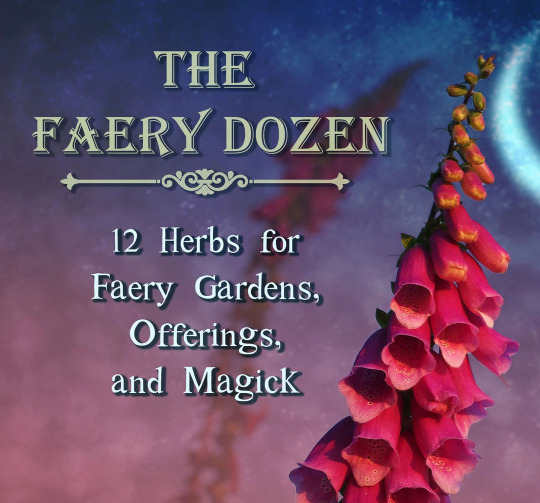
Posted by Michelle Gruben on Sep 07, 2017
In the hidden land of Faery, travelers say, there are marvelous herbs and flowers completely unknown in the human world. Brilliant colours, intoxicating scents, and magickal plants that bring joy, visions, or sleep. And yet, over the years, fairies seem to have taken a liking to some of the more common plants right here on Earth.
This list of twelve fairy favourites is drawn mainly from folklore and literature about fairies (as well as a touch of personal experience). Since fairies live close to nature, many plants and herbs are associated with the Fae—but these ones are particularly liked by the Fair Folk. Some are traditional Faery offerings, planted or bestowed in order to win their favour. Some are considered portal herbs that can aid you in making connections with the Fae. Others are used in spells and formulas for magick of the Faery kind—especially love magick, glamours, and psychic insight.
Let your intuition guide you on how to best use these Faery herbs (observing all safety precautions, of course). To cultivate an appreciation for these storied plants is—in no small way—to step into the Faery lands. I’ve eschewed some of the more exotic plants in favour of ones that can be found without exceptional effort or expense.
Language notes: “Plant” and “herb” are used interchangeably here. Plant names are capitalised out of respect. I usually write “Faery” for the race/kingdom generally and “fairy” for individuals, but not always. (Don’t dwell on it…faeries can't stand a stickler.)
1. Bluebell

Native to England and France, Bluebells grow in lightly shaded gardens and woodlands. The bell-shaped flowers are an otherworldly blue—the rarest colour in nature. The Bluebell was once named after Endymion, the sleeping lover of the moon goddess Selene. The bulbs are poisonous and can pose a danger to humans or animals who mistake them for Spring onions.
Storybook images abound of fairies playing among Bluebells. They are said to dance to the sound of the chiming flower cups. To hear a Bluebell ring is to know that fairies are near. In other (gloomier) customs, the sound presages death.
In Irish tales, it is bad luck to walk through a patch of Bluebells. To do so is to disturb the revels of the Fae and invite their displeasure. Like many fairy flowers, Bluebell is an unlucky blossom to pick or to bring indoors. To cultivate the flower, however, offers no such risks. Bluebells are a charming addition to fairy gardens. (Along with Daisies, Forget-Me-Nots, and other favourites of fairy illustrators.)
2. Vervain
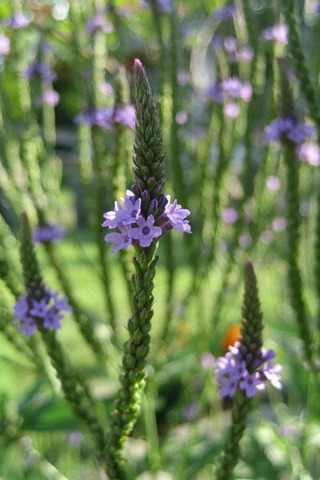
Vervain is one of the most important herbs in the occult traditions of Europe. Its connection to Faery comes through Italian traditional witchcraft. Vervain is sacred to Diana, a patroness of Witches who is also called Queen of the Fairies. In Hereditary Witchcraft, Raven Grimassi writes of a fairy who dwells within the Vervain stalk, and who brings good fortune to the one who invokes her.
Druid tradition also reveres Vervain as an herb of initiation and second sight. Seers burn Vervain incense to open a window to the Otherworlds. You don't have to look very far to find Vervain in magickal literature dating back centuries. (There are several European and American species, each with slightly different energies and uses.)
3. Elderberries

Faeries love all berries! But Elderberries, with their petite size and magickal pedigree, are a fairy favourite. Elder is a Goddess tree long believed to be a gateway to the Underworld. To chop the tree or burn the wood is forbidden. Instead, Elder's gift is her abundant clusters of berries, which are picked and saved for cordials, baked goods, and medicine.
Elderberry wine and Elderberry liqueurs are a fairy delicacy. To pour a dram or two is to be sure that you always have fairy guests.
4. Foxglove
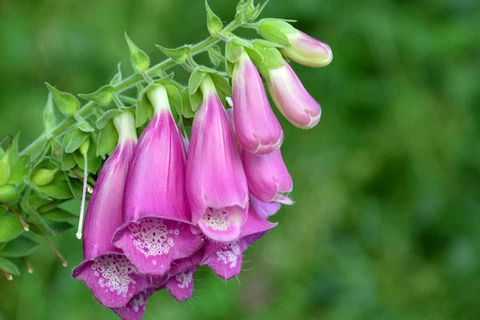
Foxglove boasts hyper-real purple flowers on long, showy stalks. Just look at some of the folkloric names of this flower: Fairy Gloves, Fairy Petticoats, Fairyweed, Fairy Bells… and so on. The common name Foxglove is probably derived from “Folks' Glove,” a British traditional word that refers to—you guessed it—the Wee Folk. The spots on the “floor” of each flower cup are said to be tracks where fairy feet have trodden.
Foxglove is extremely poisonous. Enjoy its unique beauty—but never use it in incenses or potions. Foxglove is another flower which should not be taken indoors, lest you anger the fairies. (Probably wise enough counsel, especially if you have children or pets.) However, a traditional charm calls for a little piece of Foxglove (carried in a locket) to invoke protective Faery light.
Typical of Fae plants, Foxgloves love liminal spaces and semi-shade. You can often find them on the edges of woods or trails, or just below the crests of hills. To dream of Foxgloves can be either an omen of death or invitation to visit the Faery world.
5. Honeysuckle
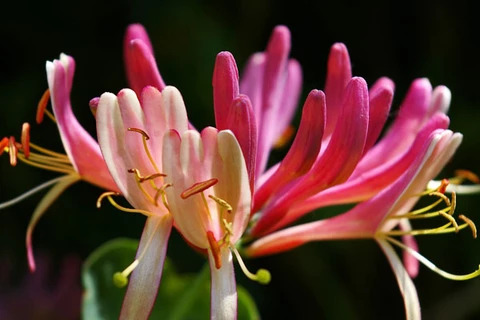
Any flower that attracts bees and butterflies is thought to appeal to fairies, who also delight in sweet smells and cheery colours. Honeysuckle is chief among these garden beauties. Honeysuckle creeps over fences and trellises with gleeful abandon, tempting humans and Fae alike with its nectar. Like many Faery plants, Honeysuckle thrives in part shade. And like many Faery plants, it also has poisonous characteristics (in the leaves and berries).
Honeysuckle flowers and perfume are powerful ingredients in love-drawing magick. (Alas, the fragrance is too faint and fleeting to be captured as an essential oil.) The clinging vines are said to symbolise seduction. The voluptuous flowers evoke the pleasure of a romantic dalliance. When picking Honeysuckle, it is polite to leave the best and last blossoms on the vine for the Fae.
6. Hawthorn

Stubby, gnarled Hawthorn is a tree with ancient links to the Underworld and the Faery realms. It is the “Thorn” in the famous Celtic trinity of trees: Oak, Ash, and Thorn. It is a plant full of contradictions, blending pink-white flowers with forbidding thorns. It is a symbol of both fertility and death. Naturally, it is traditionally planted on borders, as a hedge tree.
Hawthorn blooms in May and so is associated with the holiday of Beltane (one of two Pagan festivals when the veil between the worlds is thinnest). To meditate under a Hawthorn tree is said to strengthen one’s connection with the Faery realm. (But don’t fall asleep, unless you fancy getting lost for good.) To wander into a ring of Hawthorn trees is to all but ensure a glimpse of the Fae.
There are many superstitions and precautions regarding Hawthorn. The wood is not to be cut or burned (except at Beltane, when doing so is customary). In Ireland, farmers would go to great lengths to avoid damaging the tree while mowing or ploughing. Housewives would never dare to hang laundry from a Hawthorn tree, lest they accidentally cover up the fairies’ own wet clothing.
Hawthorn is used in spells for devoted love, wisdom, and purification. Tradition prohibits bringing boughs of Hawthorn indoors. To be on the safe side, harvest only the berries—or Hawthorn dew, which the fairies use to preserve their youthful beauty.
7. Thyme
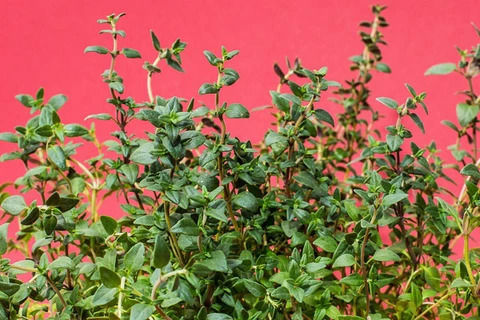
With its miniature leaves and ground-covering habits, Thyme is a common garden herb much-loved by fairies. What’s the appeal? Is it the mouth-watering fragrance? The tiny purple, lavender, or pink flowers? Who knows! But this humble potherb shows up over and over again in the lore of Faery.
Carrying a bundle of Thyme sprigs is said to allow a person to see fairies (or alternately, protect them from fairy mischief.) Sprinkling Thyme near doors or windowsills invites fairies to cross the threshold. Thyme oil may be used to anoint charms and talismans for clairvoyance.
8. Apple
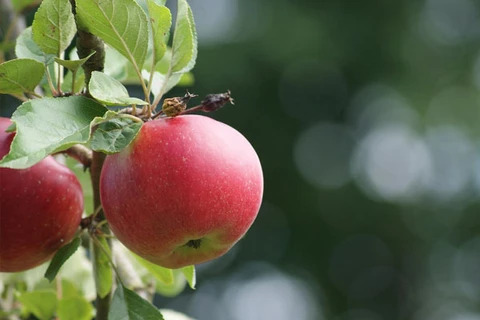
Many people are surprised to learn that the snack shared by Adam and Eve probably wasn’t an apple at all. (The Bible doesn’t specify the fruit, and medieval artists just improvised.)
No, the apple’s reputation for sin and forbidden knowledge may come from another place entirely—the realm of Faery. Like many other Fae plants, the Apple tree is linked to both sexual power and death.
The Apple is a favourite witch tree. The wood is prized for wands, and the fruit for magick spells. Apple trees bloom in spring (at Beltane) and bear ripe fruit in autumn (at Samhain), effectively marking the two poles of the Pagan calendar. When cut crosswise, the fruit reveals a hidden pentagram, a symbol of witchcraft. Ripe apples can spontaneously ferment to make cider, one of the world's first intoxicants.
Apples are found at Faery banquets and human celebrations alike. Eating an apple, especially at Samhain, is said to grant clairvoyant powers. Apples have been known to stay good for months if properly stored—a trait that echoes the near-eternal youth of the Fae. Apples are an ingredient in numerous love spells and recipes for Faery offerings. Fairies prefer smaller, heritage varieties over produce-aisle monster apples.
9. Fig

Ask any fairy and she will tell you: There is no food more irresistible than a perfectly ripened fig. Fig season is fleeting, lasting just a few weeks. While modern agriculture has tamed many fruits and flowers to accommodate human whims, nobody has yet produced a good-tasting fig in wintertime.
Fig trees appear in fairy stories in different parts of Asia, Europe, and South America. The Fig fairy is almost universally described as seductive, generous, and clever. Indian folklore tells of celestial dancers (Apsara) who live in Fig trees. They are usually benevolent, but sometimes seduce scholars and scientists in order to sexually exhaust them and frustrate their research.
The ancient species of Figs are primarily pollinated by wasps who die after entering the flower—a botanical fact that hints darkly at Faery’s seductive danger.
10. Primrose

The Primrose is a flower of true wild beauty. After spring rains, Primrose blankets fields with its pretty, delicate blossoms. In Celtic lore, large patches of Primrose are said to be a gateway into Faery. (In Christian Ireland, they hide the keys to Heaven.) Planting the flower outside your home invites in Faery luck—but be careful not to offend the fairies by letting them die.
The demure sweetness of the Primrose especially appealed to early 20th-century poets and artists. (However, the name comes not from “prim” meaning “proper”, but from its Latin name, “first rose.”) Flower fairy illustrator Cecily Mary Barker wrote this rhyme about the Primrose Fairy:
She’s dear to folk throughout the land;
In her is nothing mean:
She freely spreads on every hand
Her petals pale and clean.
And though she’s neither proud nor grand,
She is the Country Queen.
Primroses bloom at Beltane and symbolise eternal youth and innocence. It is said that a person who visited the mythical land of Tír na nÓg would return with a bouquet of Primroses. The English idiom “primrose path” refers to the experience of being pleasantly misled (as fairies are inclined to do).
The Cowslip—famously mentioned in A Midsummer Night’s Dream—is another relative of the Primrose. The North American Evening Primrose is botanically unrelated but has a similar Fae appeal. It grows in clustered patches, blooms for one evening only, and tends to resist cultivation.
11. Orchid
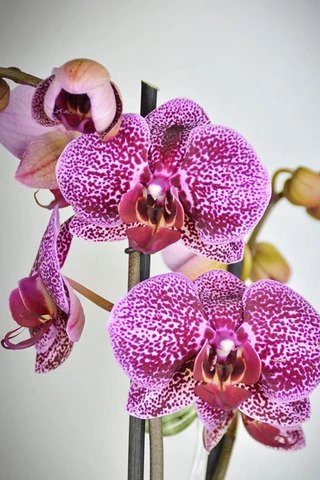
Some people consider Orchids to be the most beautiful flowers in the world. Whatever you think of them, it’s hard to deny that they are among the strangest. There is something extra-terrestrial about them—maybe even Unseelie.
Orchids are hermaphroditic and usually sterile—like fairies, Orchids think human gender and reproduction are kind of hilarious. They are the shapeshifters of the plant kingdom and can look like other plants and animals. But they are still plants, at least. (Unlike mushrooms, another fairy favourite which defies categorisation).
The diva of the flower kingdom, Orchids do well indoors and enjoy such human-provided luxuries as fertiliser, humidifiers, and trusses. Are they helpless, or just smarter than us? The well-known phenomenon of Orchid obsession (orchidomania) may be one of the most devious pranks ever perpetrated by the Fae.
12. Rowan
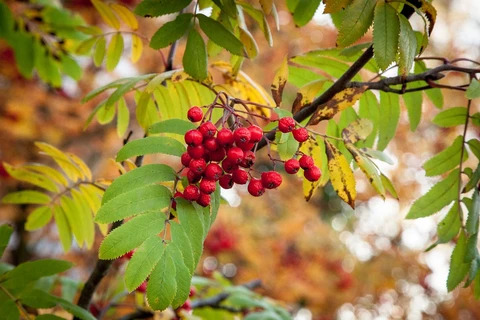
Rowan is one of the most-mentioned trees in Faery lore and magick. Celtic tradition tells us that Rowan was originally from the land of Faery, and was brought to Earth by the Tuatha de Danann. It is a tree of great strength and mystery. In North America, the tree is more commonly known as Mountain Ash.
Rowan trees grow wild in the Scottish Highlands and are known by their bright red berries. (Scottish tradition bans the use of the wood except under special circumstances.) They are commonly found near ancient settlements and stone circles—probably from having been planted for religious reasons. Individual trees may live over 200 years, playing host to innumerable fairy gatherings in that time.
Rowan is dubbed the Witch Tree, and appears in many spells for psychic power and protection. Skim through enough of these, and you may notice an apparent contradiction: Rowan is said to be both attractive to Fae and to offer protection from Fae. Rowan was planted in churchyards to discourage evil spirits. A cross of Rowan hung above a cradle once protected its occupant. And a string of Rowan berries could be worn to deflect sorcery.
Rowan is undeniably a Faery tree—she exists as a wise protector and gatekeeper. Compared, perhaps, to the playful fairies of fruits and flowers, Rowan is a stronger, older being who can keep the delicate peace between humans and Fae.
Hope you've enjoyed this whirlwind tour of Faery plants. There are many others—in fact, some people believe that every plant has a Faery spirit that presides over it. Enjoy learning about plant magick, and may your explorations take you on marvellous journeys!
https://www.groveandgrotto.com/blogs/articles/the-faery-dozen
0 notes